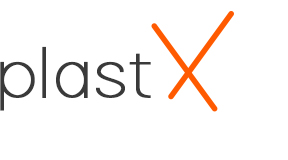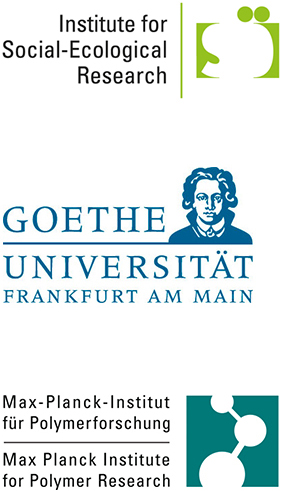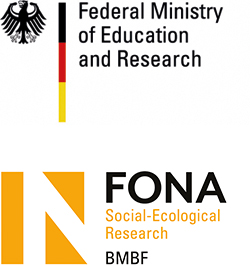Translation from the German version originally published in Knackpunkt, April 2019, Vol. 2 (27)
Part 2 (read part 1)
Since 2012, a version of the Closed Substance Cycle Waste Management Act has been in force which provides for a fixed waste hierarchy: Waste should primarily be avoided, reused in the second place and, if this is not possible, recycled. Only at the penultimate place comes the “energetic utilization”, the burning thus, with which electricity and heat energy are won. Although fossil fuels can be replaced here, CO2 is still produced and the dusts from the flue gas cleaning must be disposed of at a hazardous waste landfill. Only in the last place comes disposal, which includes dumping on a landfill or backfilling in road construction, provided that pollutant limit values are adhered to. This is where, for example, the slag ends up, about a quarter of the material that remains after incineration.
We are a long way from avoiding the majority of waste: according to the Federal Environment Agency (UBA), Germany generates the most packaging waste in Europe, at 218 kg per capita. This is 20 percent more than the European average. The amount of packaging waste has been growing inexorably since 2009 and has increased by a third in recent years for plastic packaging alone. These are therefore vast quantities of disposable packaging. And in spite of different collection systems, these are not really “re-cycled”, i.e. they are circulated, but in the best case “downcycled”. HDPE bottles (bottles containing cleaning agents and detergents) are turned into drainpipes, PP bottle lids into flower pots, PET bottles into fibres for fleece pullies or garden furniture. But even these products have a limited service life and ultimately end up in the incinerator. It is also a misconception that all packaging that ends up in the Yellow Sack or Yellow Bin is recyclable. The composite cartons, also known as “Tetra Pack”, are even partly there because there are certain conditioners that separate the cardboard from the plastic and aluminium foil. But the balance is bad: only 36 percent of the composite material can be recycled as low-quality waste paper. Chip bags, on the other hand, which consist of a composite of plastic and aluminium, are not recycled at all. Nor are there any shells containing slices of cheese or sausage. Some of them consist of 14 different (wafer-thin) plastic layers that cannot be separated. However, manufacturers choose them because they have very specific properties and the material input is lower than for pure plastic. The recyclable plastics such as PET, PP, PE or HDPE are pressed into bales in the sorting plant. However, their 96 percent purity is not sufficient to be used for the remanufacture of food packaging.
According to UBA, the recycling rate in Germany for all packaging (including glass, metals and paper) is 69.3 percent – and this only refers to the quantities that are delivered to the sorting plants, not those that are actually recycled. One third of the packaging still ends up in the black bin and thus in the waste incinerator! Experts assume that the recycling rate is significantly lower. Of the 6 million tons of plastic waste per year that UBA counts, 53 percent is incinerated and 46 percent “downcycled”. Consultic provided for the community of interests of the thermal waste treatment plants in Germany e.V. (ITAD) has set a recycling rate of only 32 percent for plastics in the post-consumer sector for 2011.
“In our plant, currently the most modern in Europe, we can recycle 55 percent of the material supplied. 40 percent is used as substitute fuel in the cement industry, for example, and 5 percent in a waste incineration plant,” says Manuel Götz, operations manager of the MEILO sorting plant in Gernsheim, describing the material flows. He considers the mistakes to be problematic, especially in the city but less so in the countryside. “The yoghurt cup does not need to be rinsed, but it is important that different materials are not stuffed into each other so that the sensors can detect the yoghurt cup and the aluminium lid separately on the conveyor belt. Despite improvements in sorting technology, household waste separation is still important, because fewer faulty waste material means cleaner material that is easier to sort.
Is real recycling possible at all?
If one of the most modern sorting plants can separate only 55 percent of the delivered packaging more or less sorted, how is the recycling rate for plastics of 58.5 percent this year and 63 percent in 2022, as prescribed by the new packaging law, to be achieved? The Gernsheimer sorting system definitely provides enough space for additional conveyor belts. “If, for example, a method is being developed to sort out black plastic parts, we would implement it here.” It’s not working yet. The Packaging Act also stipulates that by 2030 only recyclable packaging will be available on the market. This is to be achieved by means of tiered pricing of licence fees. The recyclable packaging should cost less. It is unclear how large the price differences actually are, as this is left to the manufacturers. For the time being, it is not in sight that old packaging will be replaced by the same new ones. However, the proportion of recycled material (the plastic granulate produced from used plastic) could be increased, at least for bottles from the cosmetics and cleaning sector, where purity is not as important as for food. Some manufacturers are already showing the way. The bottles of the natural cosmetics brand Alverde are made of up to 100 percent recycled HDPE. The company Werner und Mertz with the brand Frosch uses for the PET bottles and PP caps partially recyclates from the pure separation of disposable bottles, but also partially recyclates from the plastic fractions of the yellow bag. For HDPE bottles, the proportion of yellow bags is even 100 percent. This does not even require any changes to the production facilities. However, these special treatment processes have yet to establish themselves on the surface and are also becoming cheaper. In 2017, the amount of recycled material used in the production of plastics was 12.3 percent. The largest share went into building products followed by packaging followed by agriculture. With a little more effort, plastics from the yellow sack can be processed to such an extent that packaging can be made from them. In a few years, according to Norbert Völl of DSD – Duales System Holding, the technology could be ready to produce grades of purity that are also suitable for food packaging. But here, too, the question of a possible migration of pollutants from packaging into food will arise when the time comes. Similar to recycled paper, where mineral oil residues can pass from the packaging into the food.
So we are still a long way from real recycling. But in terms of waste hierarchy, we should give more thought to how we can avoid waste and reuse packaging. For example, Deutsche Umwelthilfe (DUH) proposes that politicians set concrete waste avoidance targets, consistently enforce the legal reusable quota, if necessary also by means of legal measures, and introduce reuse quotas for further food, sales and shipping packaging. Sattlegger and Raschewski analyse in the Postal Growth Blog why politics prefers to concentrate on technical solutions for recycling rather than on avoidance strategies and come to the conclusion that avoidance strategies only have a chance to prevail if our growth-based economic model is questioned.
Sources:
Deutsche Umwelthilfe (DUH) (2014): Das Märchen vom umweltfreundlichen Getränkekarton *
https://www.umweltbundesamt.de/themen/weltrecyclingtag-wieviel-recyceln-wir-wirklich *
Hanns-J. Neubert (2018): Erste Hilfe gegen Plastik. Technology Review Special , 13/2018, 48-50 *
consultic Marketing und Industrieberatung GmbH (2013): Kunststoffrecycling in Deutschland – Potentiale und Realität *
https://www.bvse.de/themen-kunststoff-recycling/kunststoffaufkommen.html *
https://www.youtube.com/watch?v=EvuNJ_yZi3g (Norbert Völl from DSD-Duales System Holding, Min. 10:40) *
Deutsche Umwelthilfe (DUH) (2018): „Plastikstrategie für Deutschland“ Forderungen an die Bundesregierung *
https://www.postwachstum.de/vom-zero-waste-lifestyle-zur-muellfreien-zukunft-20190130
[all retrieved on 8 February 2019]





